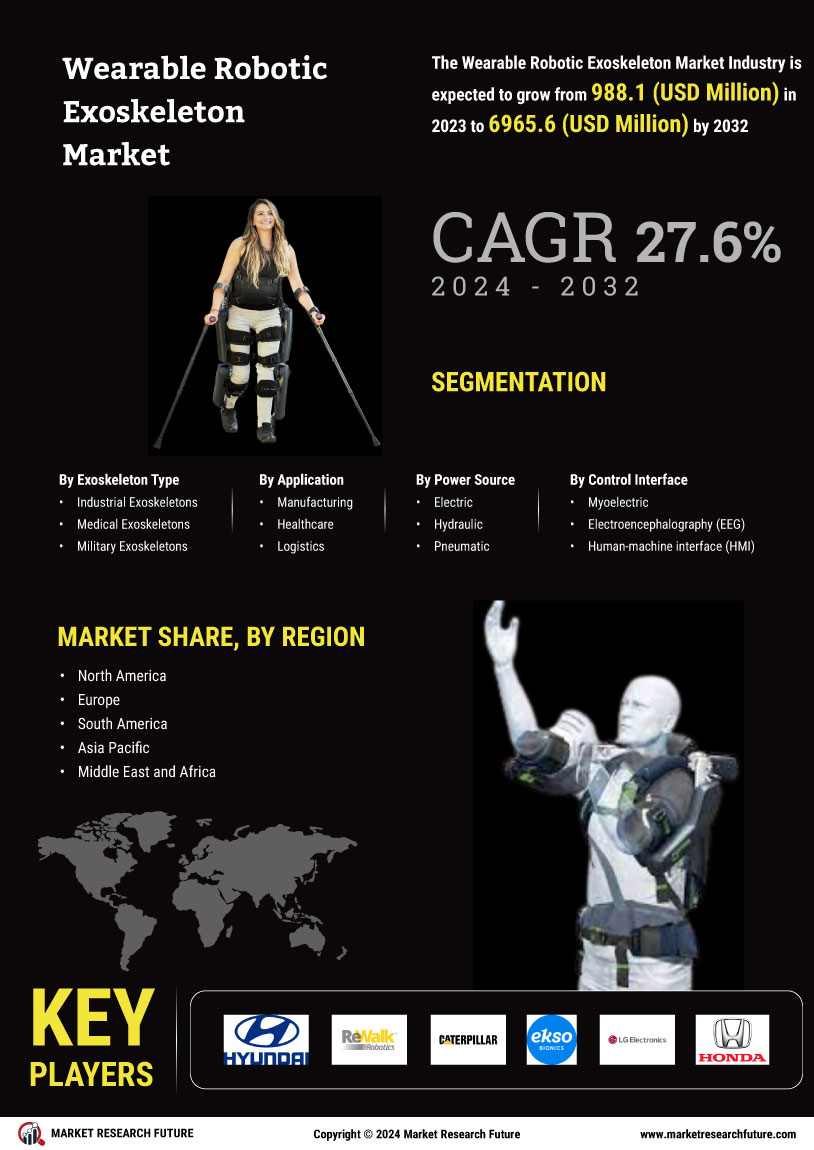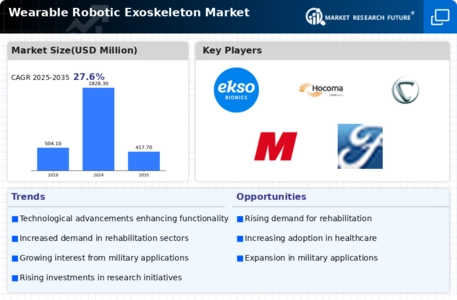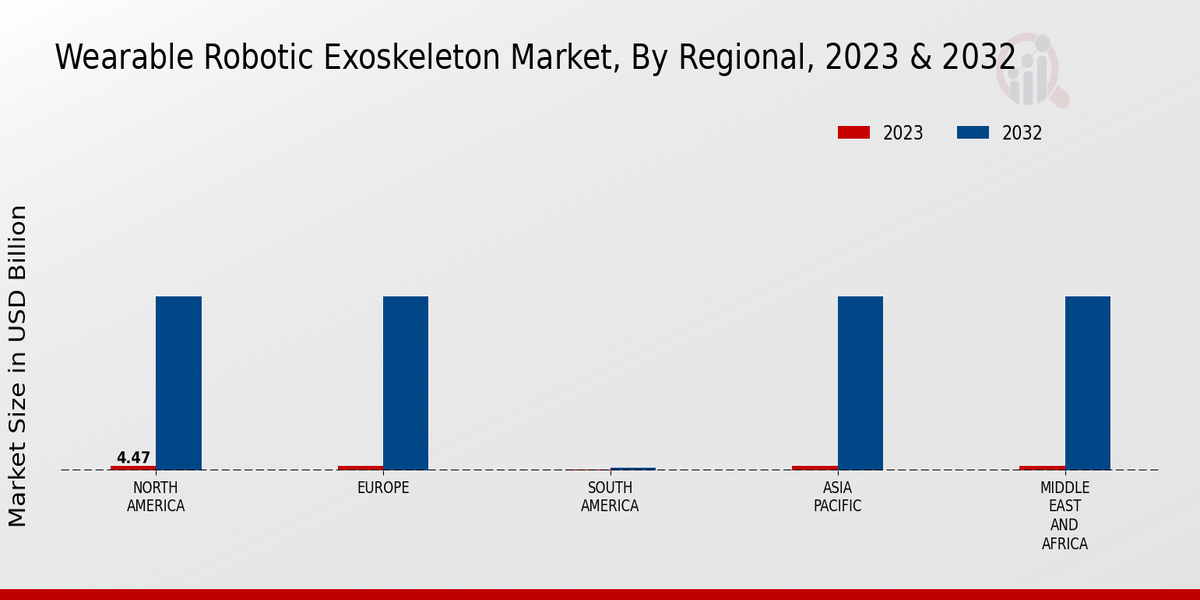Aging Population
The increasing global aging population significantly influences the Global Wearable Robotic Exoskeleton Market Industry. As the demographic shifts towards older age groups, the need for assistive technologies becomes more pronounced. Exoskeletons can provide essential support for elderly individuals, helping them maintain independence and mobility. This trend is particularly evident in regions with high life expectancy, such as Japan and Western Europe. The market's growth is expected to be substantial, with projections indicating a value of 417.7 USD Billion by 2035, as more elderly individuals seek solutions to enhance their quality of life.
Healthcare Sector Growth
The expansion of the healthcare sector plays a crucial role in the Global Wearable Robotic Exoskeleton Market Industry. Increased investments in rehabilitation technologies and patient care drive demand for exoskeletons, particularly in physical therapy and rehabilitation settings. Hospitals and rehabilitation centers are increasingly adopting these devices to aid recovery for patients with mobility impairments. This trend is supported by government initiatives aimed at improving healthcare infrastructure. As a result, the market is poised for growth, with a projected compound annual growth rate of -12.56% from 2025 to 2035, reflecting the ongoing evolution of healthcare technologies.
Market Growth Projections
The Global Wearable Robotic Exoskeleton Market Industry is projected to experience substantial growth over the coming years. With an anticipated market value of 1828.3 USD Billion in 2024 and a forecasted increase to 417.7 USD Billion by 2035, the industry is set for significant expansion. However, it is important to note that the market may face challenges, as indicated by a projected compound annual growth rate of -12.56% from 2025 to 2035. This fluctuation suggests that while initial growth may be robust, the industry could encounter hurdles that necessitate strategic adjustments.
Technological Advancements
The Global Wearable Robotic Exoskeleton Market Industry is witnessing rapid technological advancements that enhance the functionality and efficiency of exoskeletons. Innovations in materials, such as lightweight composites and smart sensors, enable the development of more adaptable and user-friendly devices. For instance, the integration of artificial intelligence allows for real-time adjustments based on user movements, improving overall performance. As a result, the market is projected to reach 1828.3 USD Billion in 2024, driven by the demand for advanced rehabilitation solutions and enhanced mobility aids for individuals with disabilities.
Increased Awareness and Acceptance
Growing awareness and acceptance of wearable robotic exoskeletons among healthcare professionals and patients significantly impact the Global Wearable Robotic Exoskeleton Market Industry. Educational initiatives and successful case studies demonstrate the benefits of exoskeletons in rehabilitation and mobility enhancement. As more individuals become informed about the potential of these devices, the demand is likely to increase. This shift in perception is crucial for market growth, as it encourages investment and innovation in the sector. The industry is expected to evolve rapidly, responding to the rising expectations of users seeking effective mobility solutions.
Military and Industrial Applications
The Global Wearable Robotic Exoskeleton Market Industry is also driven by the increasing adoption of exoskeletons in military and industrial applications. These devices enhance the physical capabilities of soldiers and workers, reducing fatigue and the risk of injury during demanding tasks. For instance, exoskeletons are utilized in logistics and manufacturing sectors to assist workers in lifting heavy loads safely. This trend is expected to contribute to market growth, as organizations recognize the potential for improved productivity and worker safety. The integration of exoskeletons into various industries suggests a promising future for the market.







